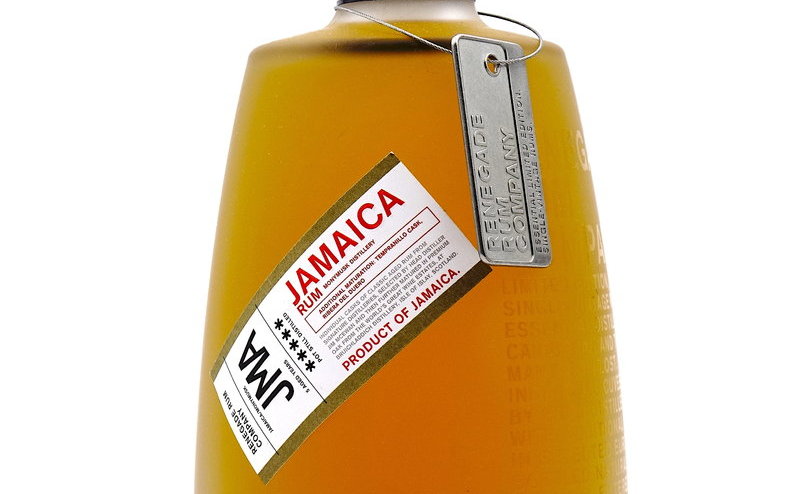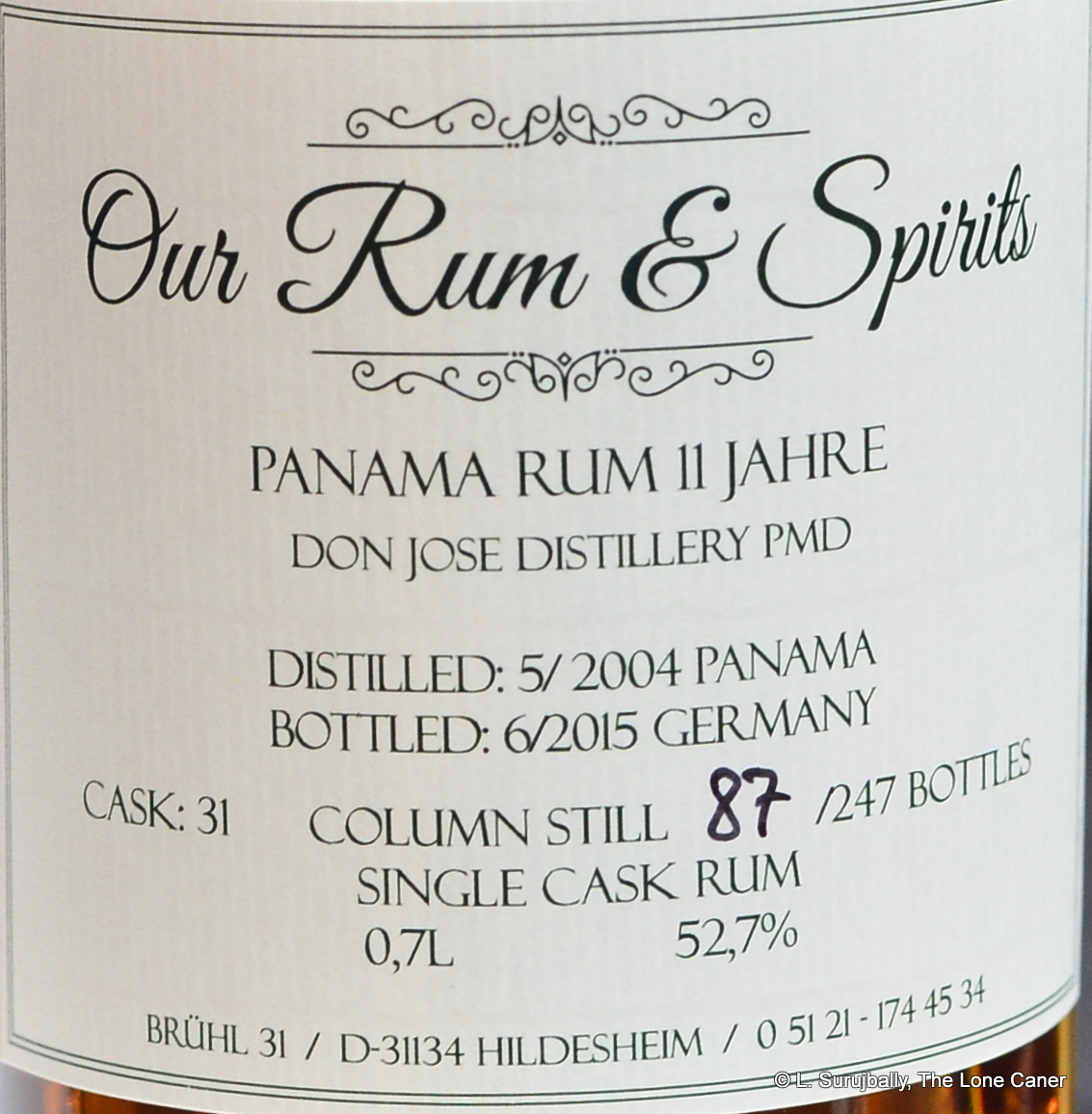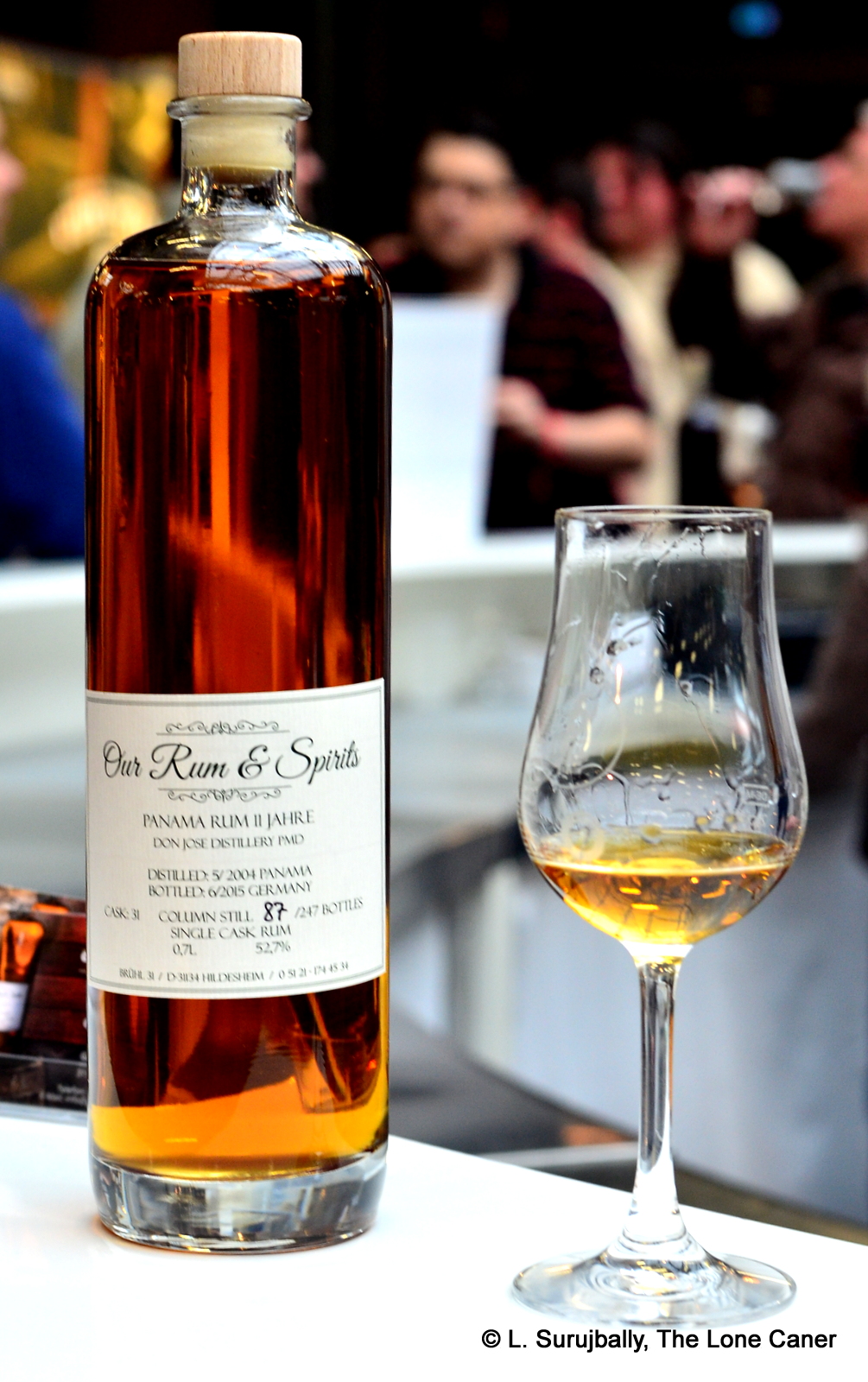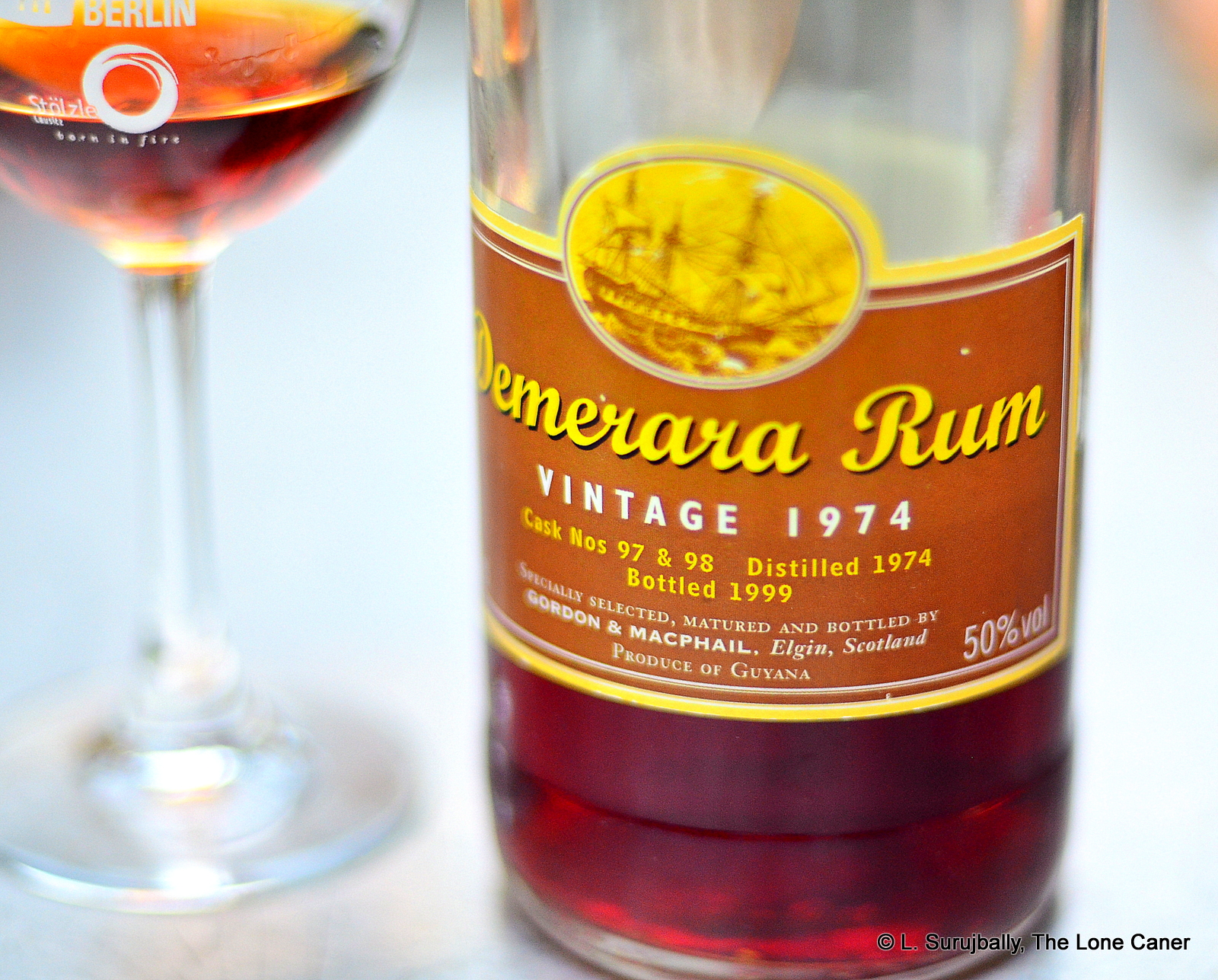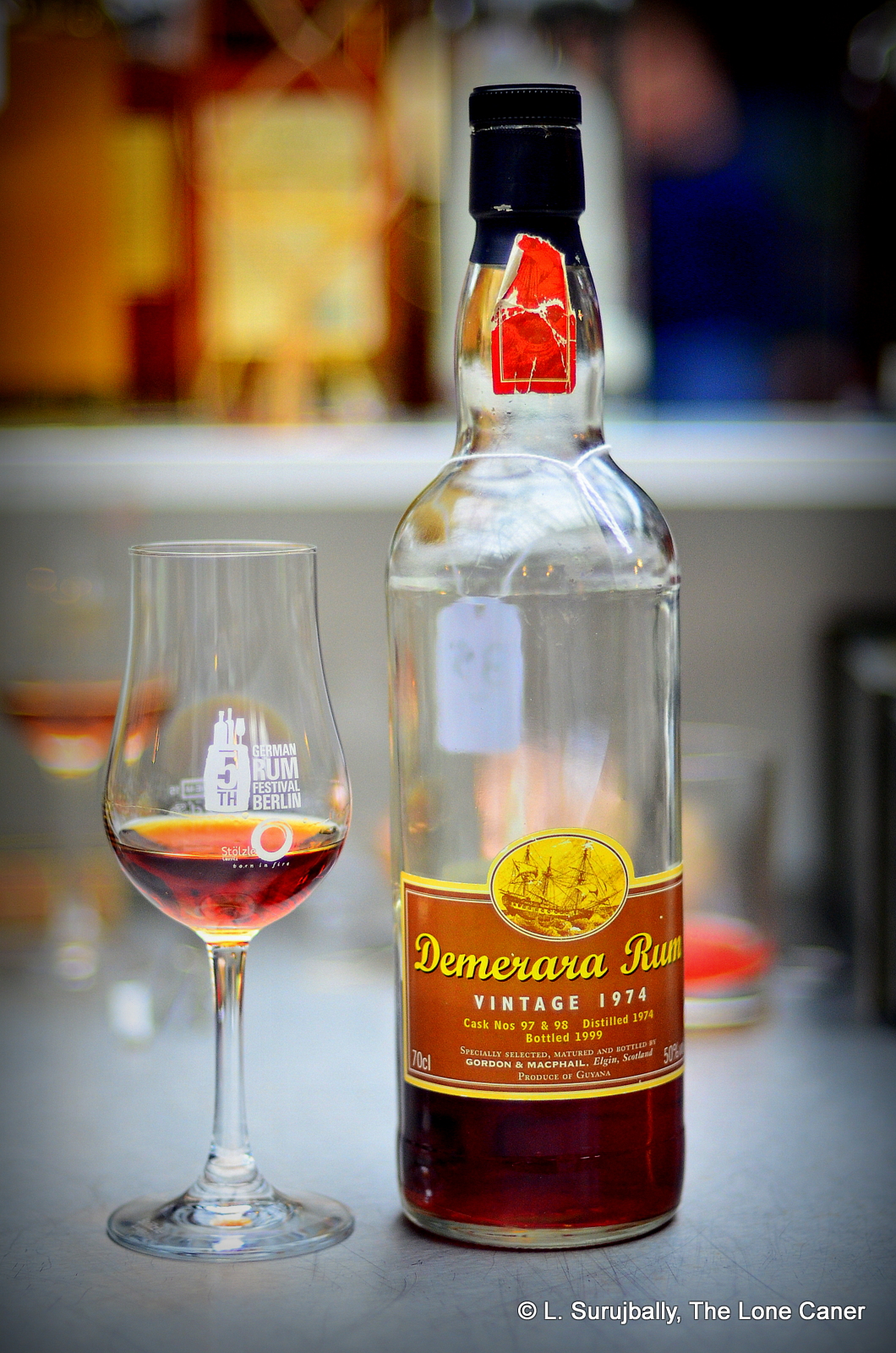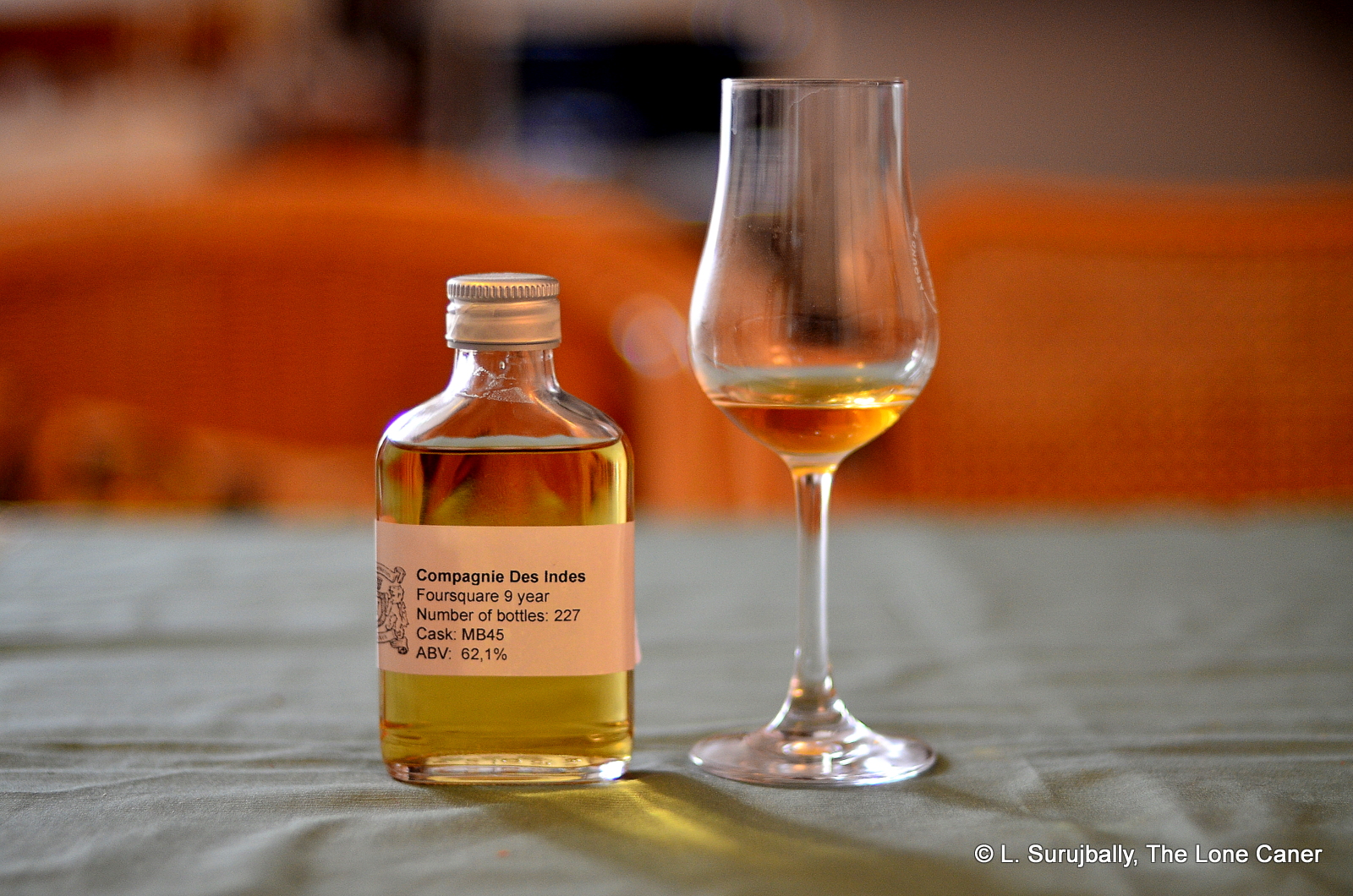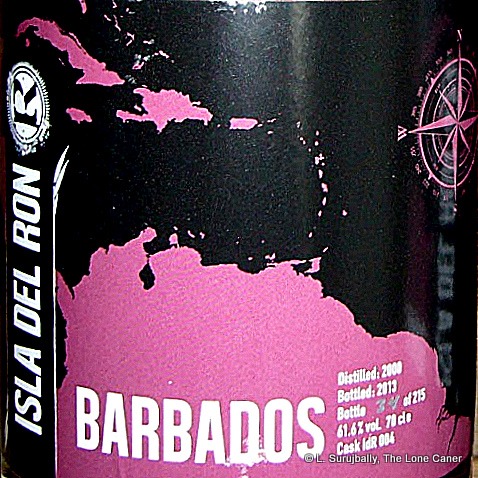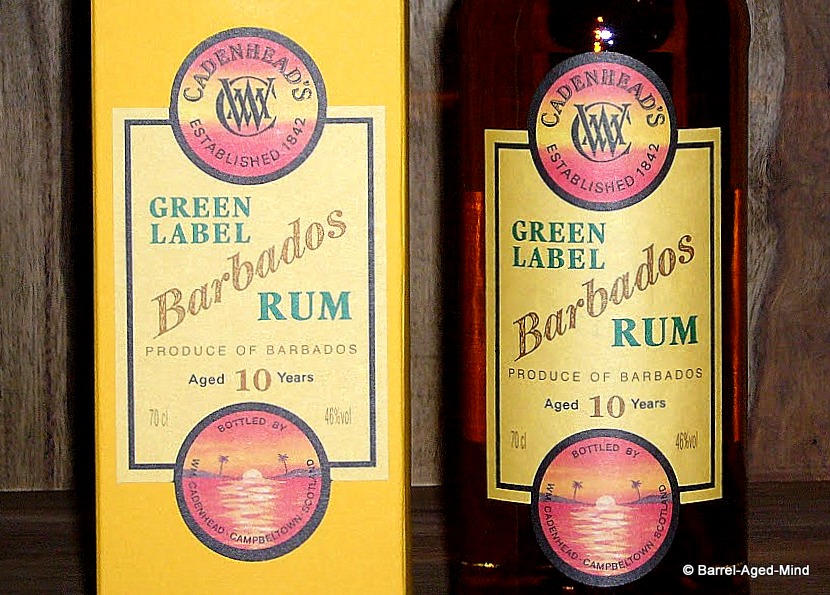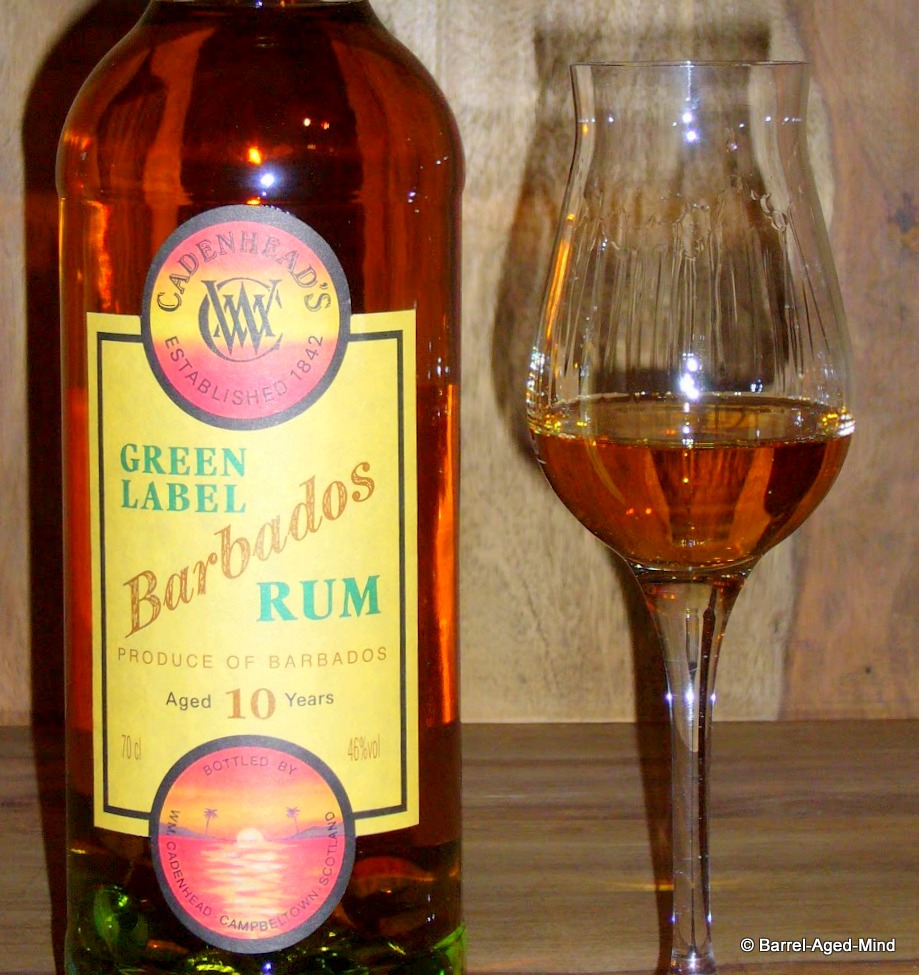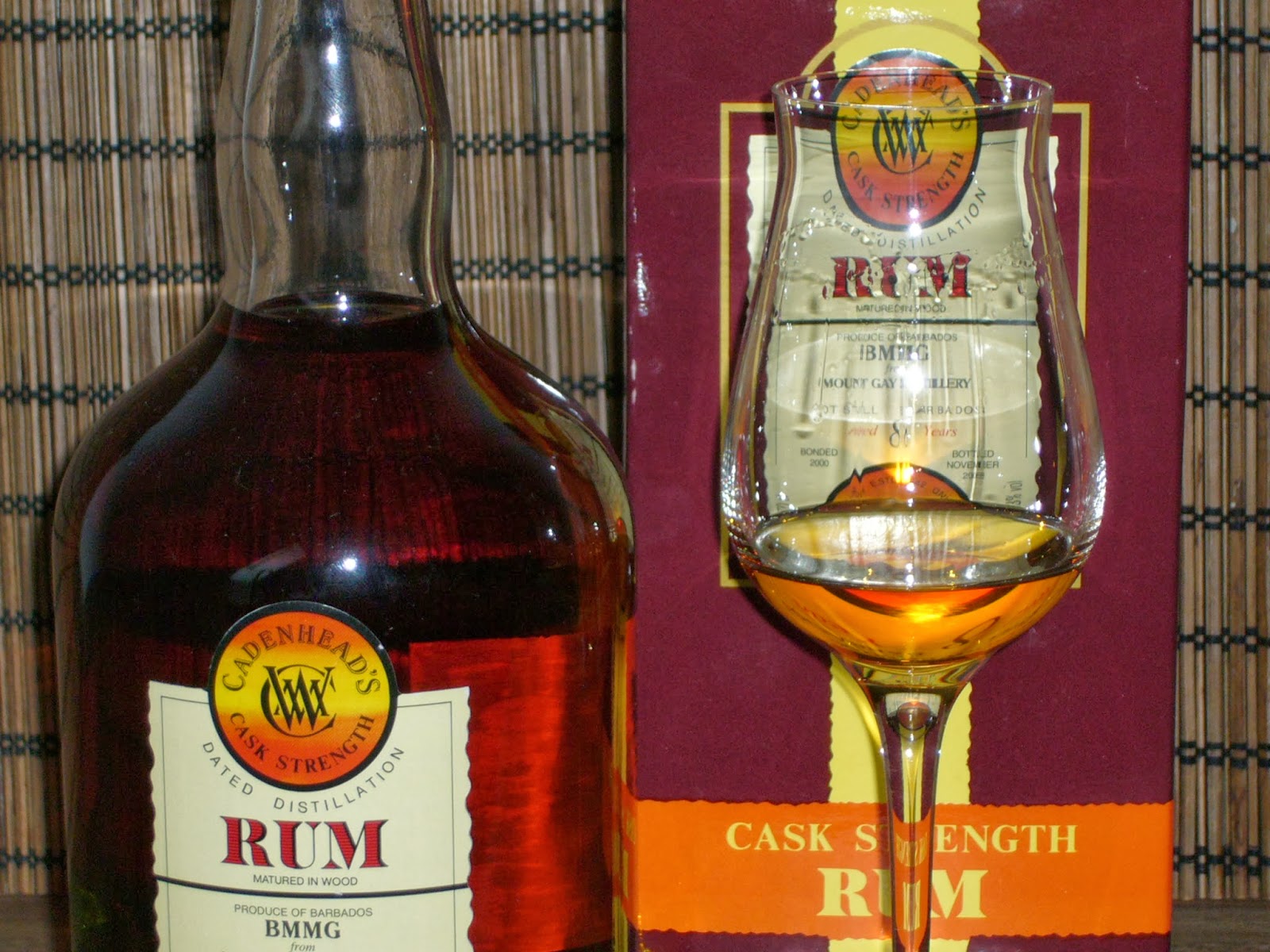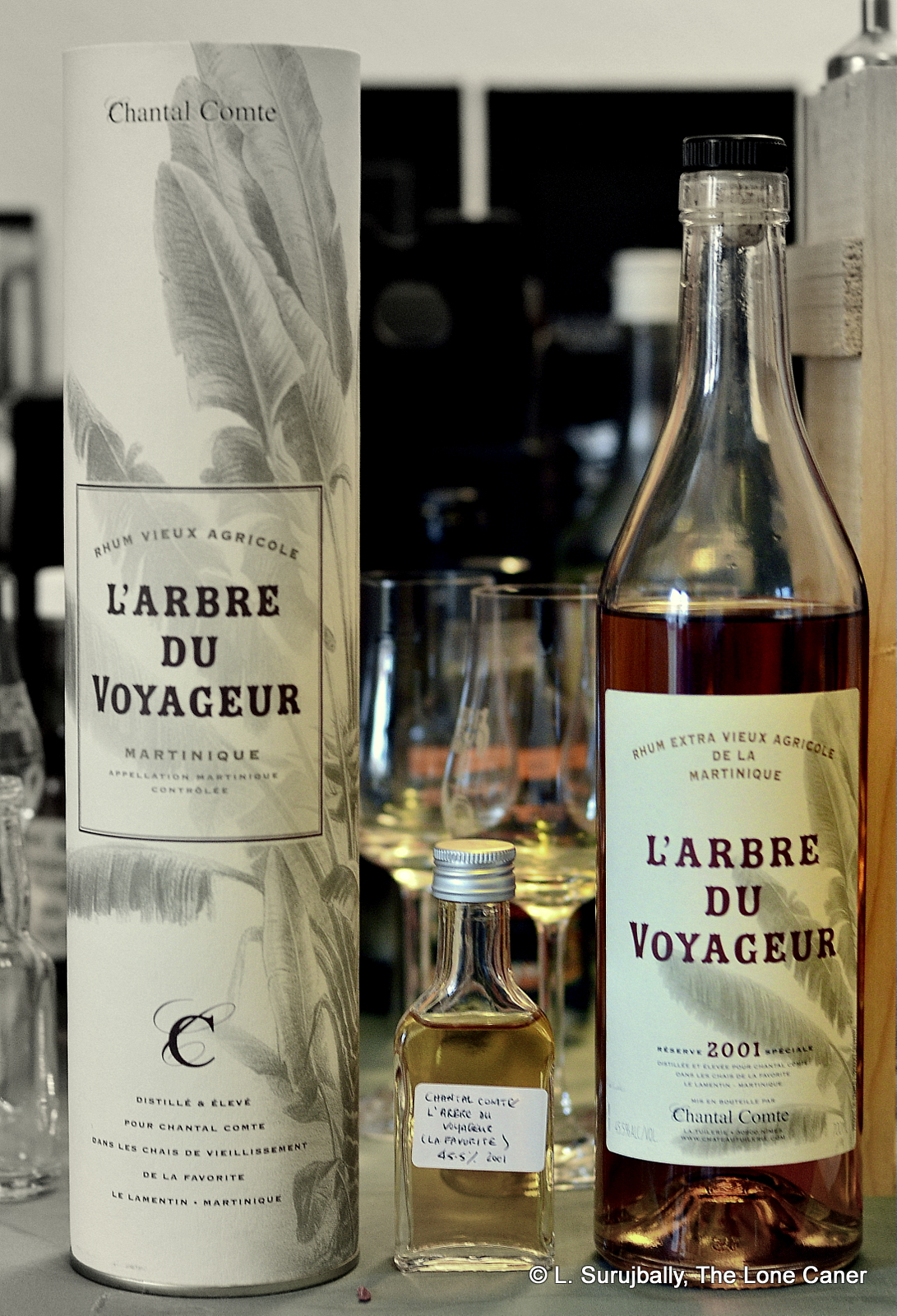
The mark of the successful long-term independent bottler in the public perception rests upon two main pillars – one is of course the quality of the rums they put out the door (and perhaps, how consistently); and the other is the level of originality they bring to the game. By that I mean how often do they stray from the mainstream of the standard pantheon and go in new directions, seek out different maturations, different ages, different barrels, different distilleries (or whole countries). It is because Velier nails both of these aspects that they are as successful as they are, though I would certainly not discount Samaroli, Compagnie des Indes or Rum Nation (among others).
Rum Nation, also from Italy, has been somewhat out of the public eye of late, but the point about originality does apply to them – think back on the Jamaican White 57% rum, for example, or the Supreme Lord series, or the 20+ year old Demeraras, or their Peruvian and Guatemalan rums, the latter of which most other indies don’t often go near. In the last few years Fabio Rossi, the founder of the brand, went in yet another direction by issuing a new limited-edition series called the “Small Batch Rare Rums” … and one of them was this intriguing little number from Madeira, from a distillery called Engenho Novo – they are the boys behind the William Hinton brand of rums which have recently become more available in Europe over the last few years.
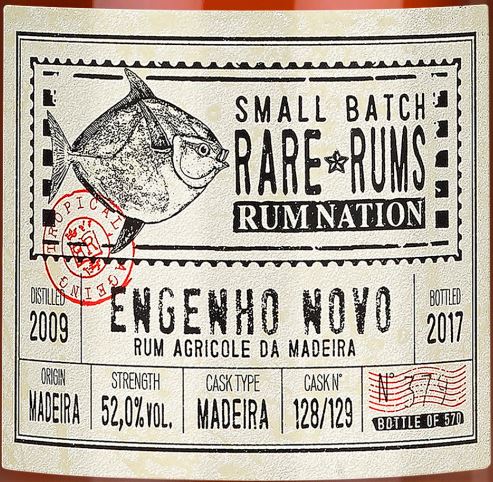 I’ll provide some more background detail in the Other Notes below, but for the moment let’s just read off the fact sheet for the rum which is very helpfully provided on the Rare Rums website and on the bottle label itself. This is a cane juice distillate and can therefore be classed as an agricole-style rhum; distilled 2009 and the four barrel outturn from a column still was aged in Madeira casks, providing 570 bottles in 2017, with a strength of 52%.
I’ll provide some more background detail in the Other Notes below, but for the moment let’s just read off the fact sheet for the rum which is very helpfully provided on the Rare Rums website and on the bottle label itself. This is a cane juice distillate and can therefore be classed as an agricole-style rhum; distilled 2009 and the four barrel outturn from a column still was aged in Madeira casks, providing 570 bottles in 2017, with a strength of 52%.
For those not into their lighter spirits, “Madeira” is a fortified wine made in the Portuguese islands of Madeira off the African coast, and can be either dry or sweet. Given the entire ageing period of the rum took place in such casks, I expected to see a substantial divergence from both an aged agricole or any other kind of “standard” ex-bourbon-barrel profile. In fact, swirling the dark brown rum in the glass made me wonder if some caramel hadn’t been added to colour it…or whether the casks were completely dry of wine before pouring the good stuff in to age.
Still, the nose delivered, if not precisely that clear-grassy-herbal aroma characteristic of the French islands. Oh no. This was more like one of those mated with a drowsy Demerara from Port Mourant: it smelled of dark ripe cherries and coca cola, fleshy stoned fruits and red licorice, plus unsweetened cooking chocolate, hot black tea, raisins and wasn’t that a bit of brine and olives down the back end? Sure it was. And very nice too.
And even at 52%, after an initial whiff of its cane juice origins — it began somewhat fresh and crisp before relaxing — the rum proceeded quite softly on the palate, and suggested a taste reminiscent of a stack of old books in a dusty library nobody now visits, the dry mustiness of barnyard hay. This was set off by the taste of a Haagen-Dasz dulce de leche ice cream (the Little Caner loves that stuff and I pinch it from his tub every chance I get), as well as brine, more olives, licorice, prunes, red wine, citrus peel, cider and the vague tartness of gooseberries and unsweetened yoghurt. It was quite rich and flavourful, a nice drink, finishing with with warm notes of cherries, raisins, a little herbal, and cider, salt caramel and sour cream.
So where does that leave us? Well, with a rather peculiar product. It is unique in its own way, giving you the odd-but-pleasant experience of tasting a well-assembled agricole-Demerara blend, or maybe a molasses-based Guadeloupe rhum. That may be a Madeiran thing – I can’t tell, since I have not had enough from there to make the claim with assurance (yet). But in any event, Rum Nation doesn’t make bad rums – they’re too professional an outfit for that, and I’ve thought so ever since I ran into them in 2010 and bought that entire year’s output at once. They stratify their products into the starter rums, sweeter ones (the Millonarios), high-end aged rums (the Demeraras and Jamaicans) and these higher proof Rares for the cognoscenti. This one isn’t the best or most original rum they’ve ever made, but it does show Fabio Rossi forging ahead in his own way to expand his company’s range, producing new and fascinating rums for us all to try — and it’s definitely a rum to sample if you’re ever bored with the regular islands’ rums and want to try something different…but not too different.
(#559)(85/100)
Other notes
- Wes, who reviewed it back in January 2018, rated it as 50% ABV on his hydrometer, which equates roughly to 10g/L dosage, give or take.
- The sugar factory and distillery was founded in 1845 by William Hinton; it reached a peak production of 600 tons of cane processed per day in 1920, but closed in 1986 (no reasons are given on their website, but perhaps falling sugar prices contributed, or the expense of maintaining extensive sugar cane fields). It was restarted by Hinton’s heirs in 2006 as Engenho Novo de Madeira.
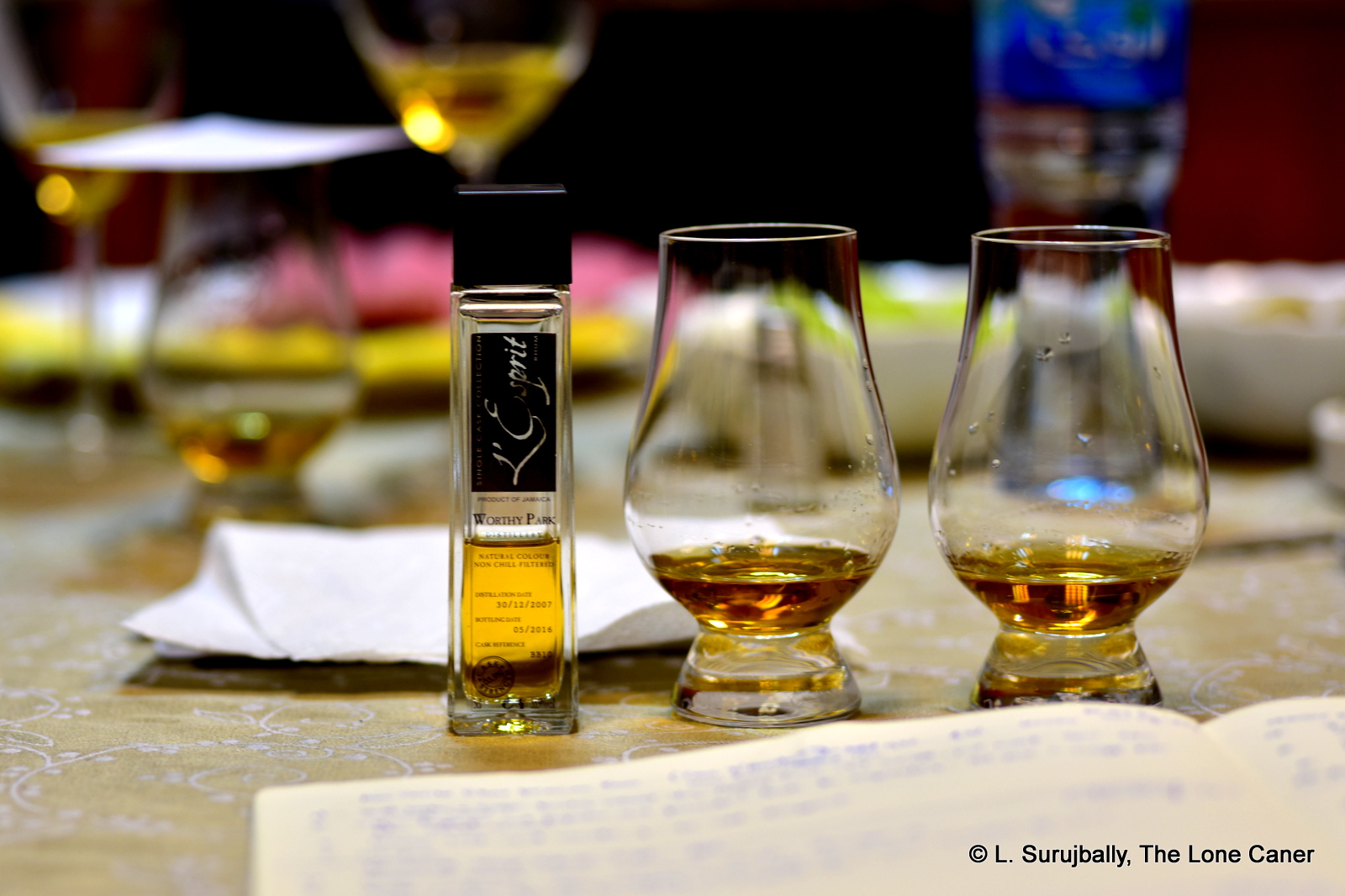
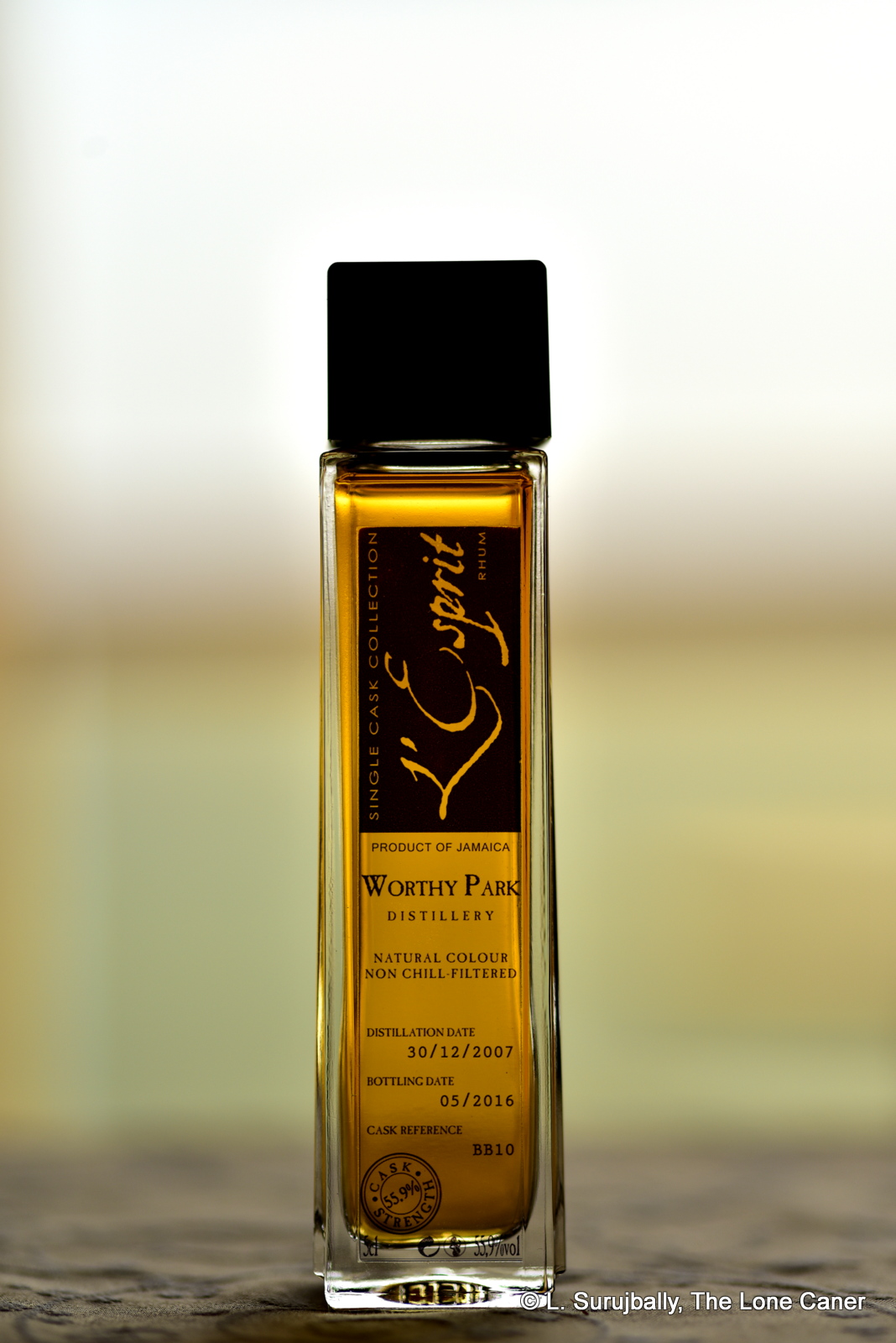 So, given how many Jamaicans are on the scene these days, how does this young, continentally aged 55.9% golden rum fare? Not too shabbily. It’s strong but very approachable, even on the nose, which doesn’t waste any time getting started but announces its ester-rich aromas immediately and with authority: acetone, nail polish and some rubber plus a smell of righteous funk (spoiling fruits, rotten bananas, that kind of thing). Its relative youth is apparent in the uncouth sharpness of the initial aromas, but once one sticks with it, it settles into its own special groove, calms itself down and does a neat little balancing act between sharper scents of citrus, cider, apples, hard yellow mangoes and green grapes, and softer ones of bananas, cumin, vanilla, marshmallows and cloves.
So, given how many Jamaicans are on the scene these days, how does this young, continentally aged 55.9% golden rum fare? Not too shabbily. It’s strong but very approachable, even on the nose, which doesn’t waste any time getting started but announces its ester-rich aromas immediately and with authority: acetone, nail polish and some rubber plus a smell of righteous funk (spoiling fruits, rotten bananas, that kind of thing). Its relative youth is apparent in the uncouth sharpness of the initial aromas, but once one sticks with it, it settles into its own special groove, calms itself down and does a neat little balancing act between sharper scents of citrus, cider, apples, hard yellow mangoes and green grapes, and softer ones of bananas, cumin, vanilla, marshmallows and cloves. Rumaniacs Review #84 | 0554
Rumaniacs Review #84 | 0554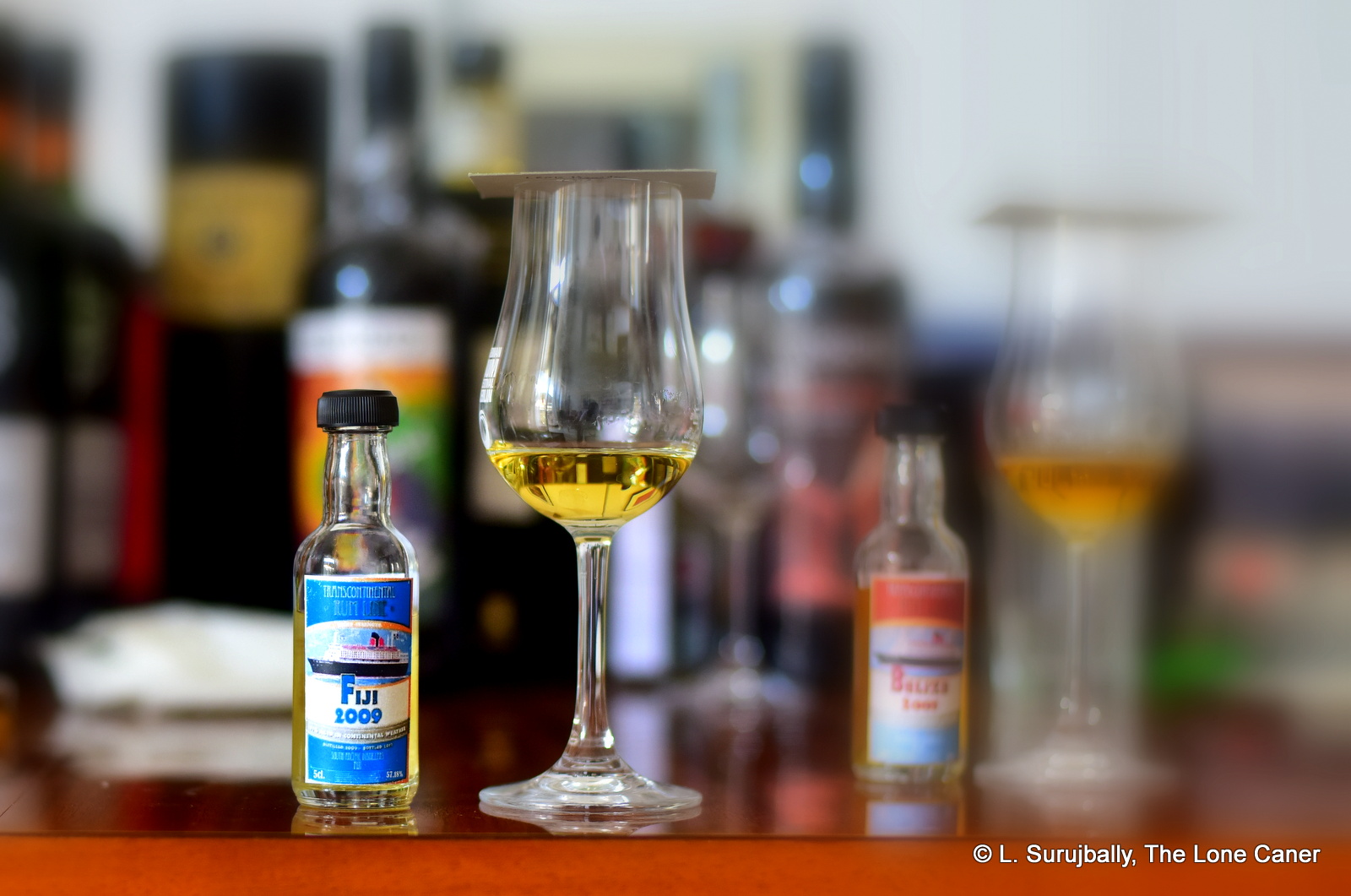
 That said, the still which produced this pale yellow 57.19% ABV rum remains an open question, though my personal belief is that it’s a column still product. It certainly noses that way – aside from presenting as a fierce little young rum, it lacks something of the depth and pungency of a pot still spirit. However, that doesn’t matter, because it’s damn fine on its own merits – brine, olives, paint, turpentine, acetones, fresh nail polish, more brine and gherkins, and that’s just the beginning. It has aspects that are almost Jamaican, what with a bunch of prancing dancing esters jostling for attention, except that the smell is not so crisply sweet. It develops very nicely into smoke, leather, linseed oil for cricket bats, more brine and oily smoothness. Like a set of seething rapids finished with the messing around, it settles down to a much more refined state after half an hour or so.
That said, the still which produced this pale yellow 57.19% ABV rum remains an open question, though my personal belief is that it’s a column still product. It certainly noses that way – aside from presenting as a fierce little young rum, it lacks something of the depth and pungency of a pot still spirit. However, that doesn’t matter, because it’s damn fine on its own merits – brine, olives, paint, turpentine, acetones, fresh nail polish, more brine and gherkins, and that’s just the beginning. It has aspects that are almost Jamaican, what with a bunch of prancing dancing esters jostling for attention, except that the smell is not so crisply sweet. It develops very nicely into smoke, leather, linseed oil for cricket bats, more brine and oily smoothness. Like a set of seething rapids finished with the messing around, it settles down to a much more refined state after half an hour or so.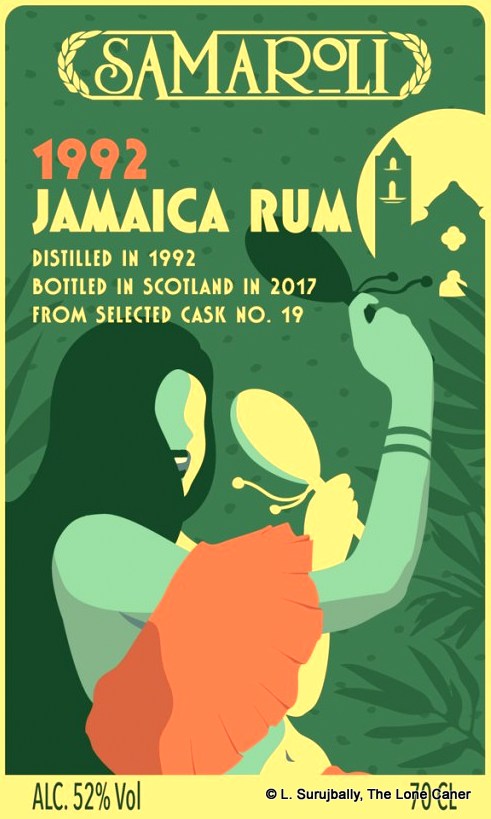
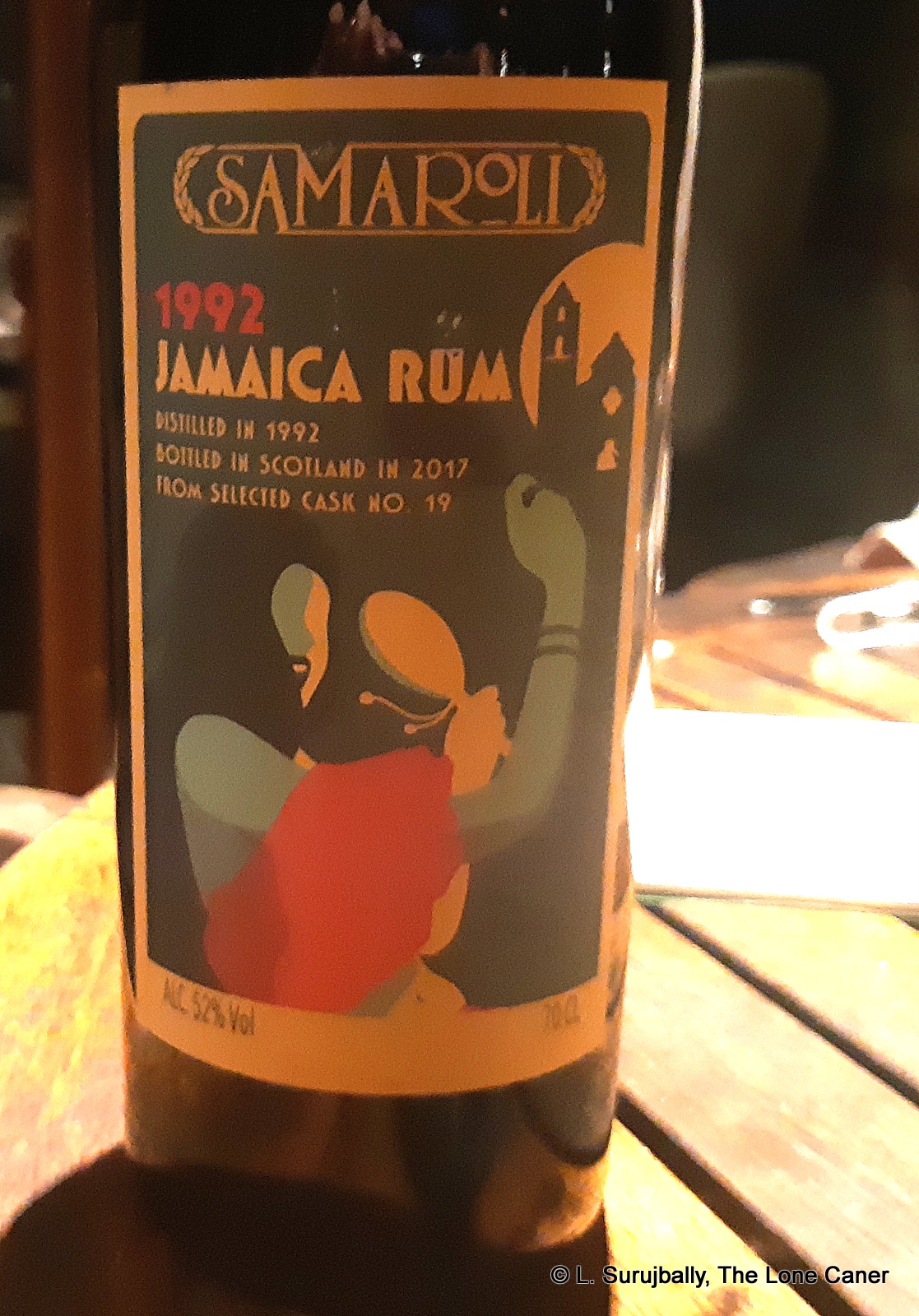 And the taste, the palate, the way it comes together, it’s masterful. At 52% it’s downright near damned perfect – the the balance between mouth puckering citrus plus laid back funk, and easier, softer flavours is unbelievably well done. Soda pop, honey, cereal, red currants, raspberries, fanta and orange zest dance exuberantly cross the tongue, never faltering, never allowing any one piece to dominate. Like an exquisitely choreographed dance number, the molasses, vanillas and fruits (peaches, yellow plums, pears, ripe yellow Thai mangoes) tango alongside sharper notes of citrus, lemon zest, overripe bananas, sandalwood and ginger. Even the finish is spectacular – just long enough, just sharp enough, just mellow enough, allowing each of the individually discerned flavours of fruits, toffee, chocolate and citrus to come out on stage one last time for a bow, before fading back and making way for the next one
And the taste, the palate, the way it comes together, it’s masterful. At 52% it’s downright near damned perfect – the the balance between mouth puckering citrus plus laid back funk, and easier, softer flavours is unbelievably well done. Soda pop, honey, cereal, red currants, raspberries, fanta and orange zest dance exuberantly cross the tongue, never faltering, never allowing any one piece to dominate. Like an exquisitely choreographed dance number, the molasses, vanillas and fruits (peaches, yellow plums, pears, ripe yellow Thai mangoes) tango alongside sharper notes of citrus, lemon zest, overripe bananas, sandalwood and ginger. Even the finish is spectacular – just long enough, just sharp enough, just mellow enough, allowing each of the individually discerned flavours of fruits, toffee, chocolate and citrus to come out on stage one last time for a bow, before fading back and making way for the next one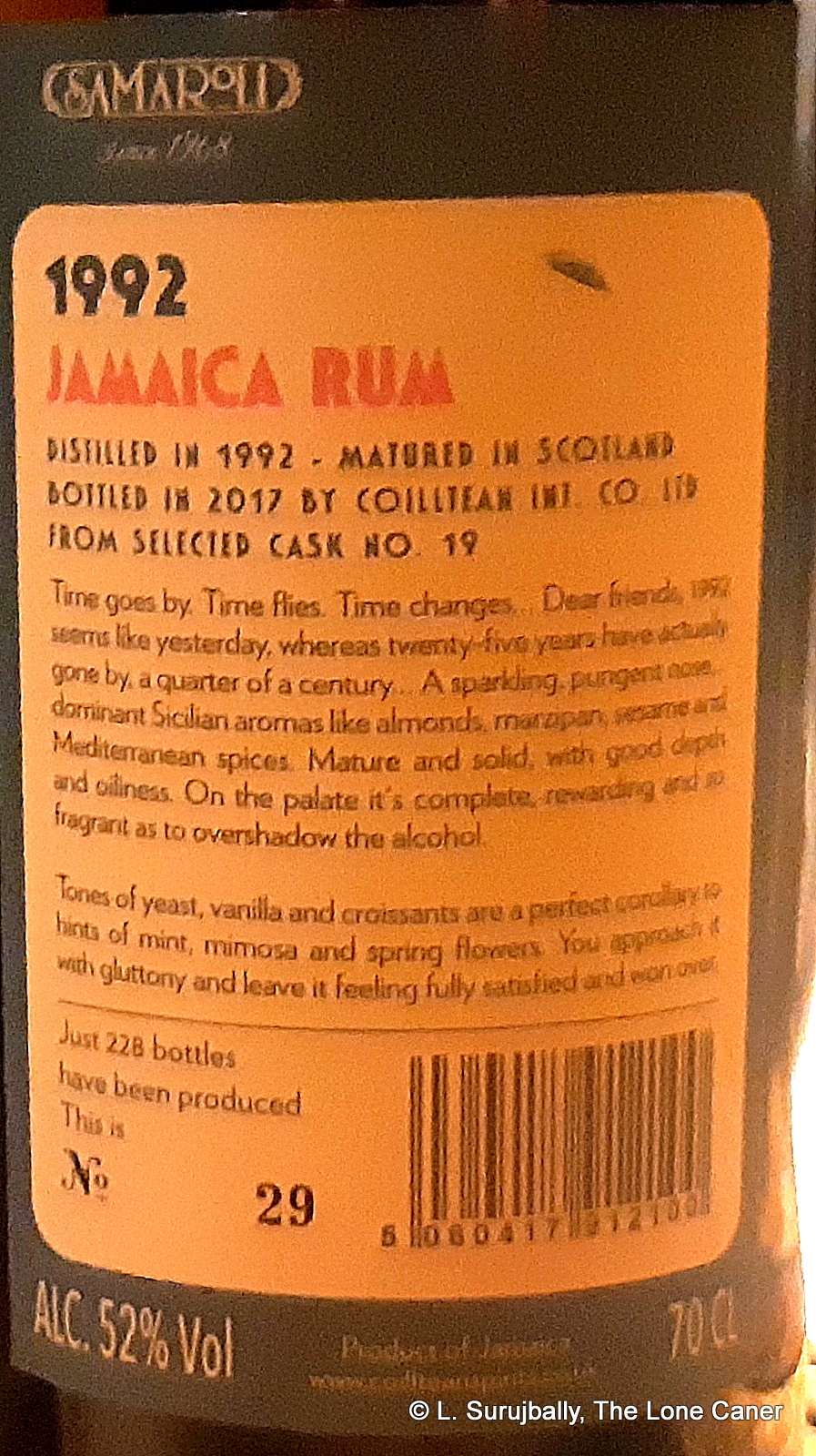 I don’t know what they did differently in this rum from others they’ve issued for the last forty years, what selection criteria they used, but
I don’t know what they did differently in this rum from others they’ve issued for the last forty years, what selection criteria they used, but 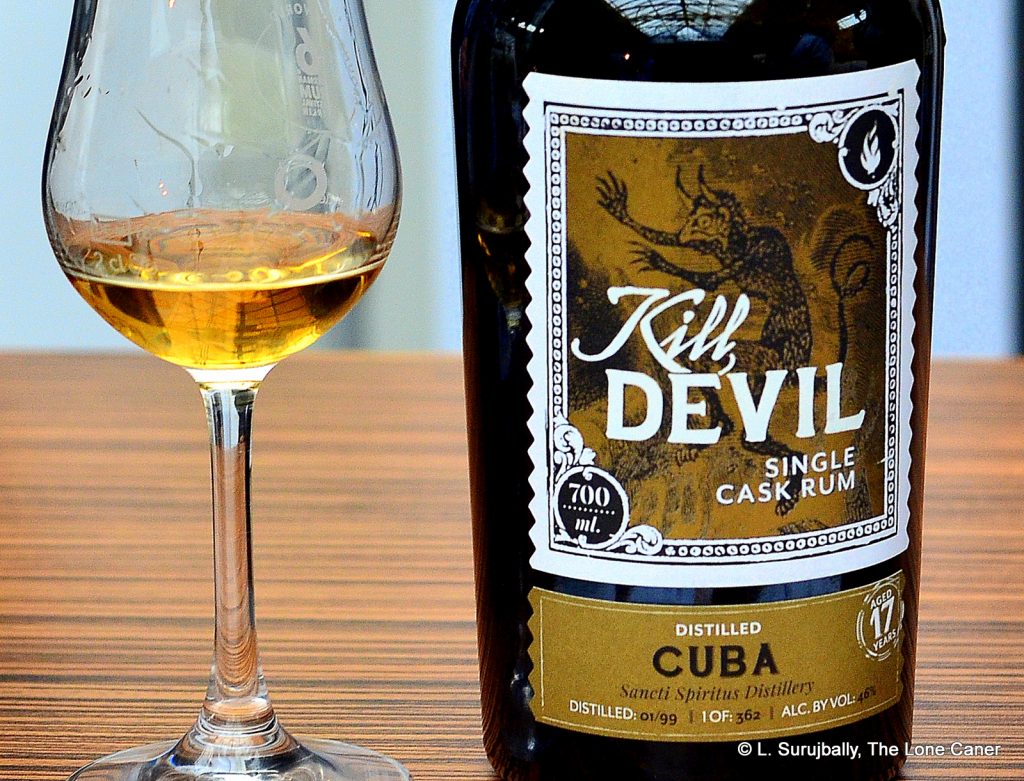
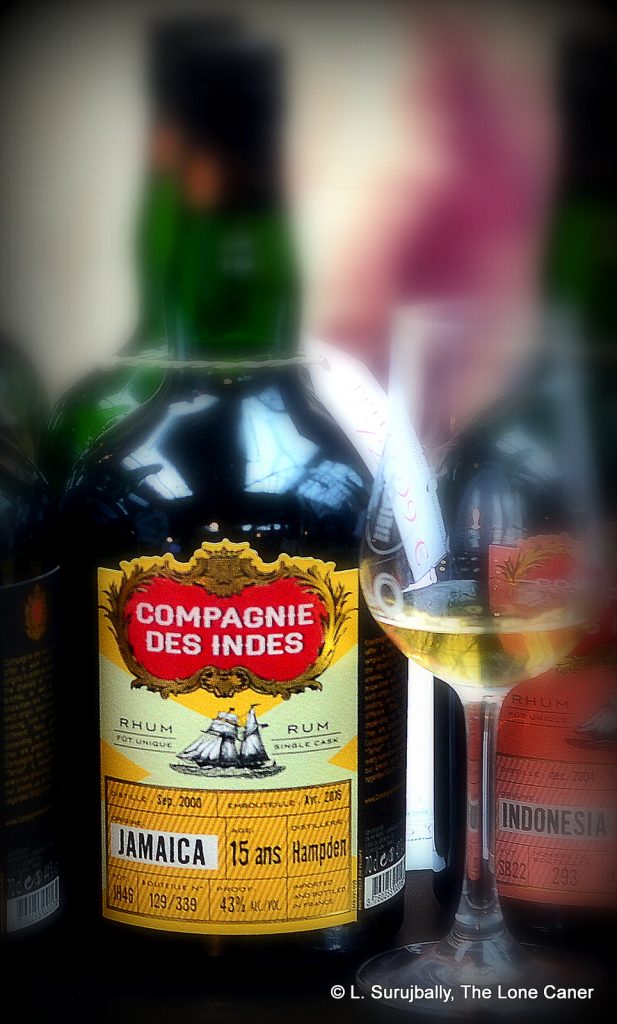
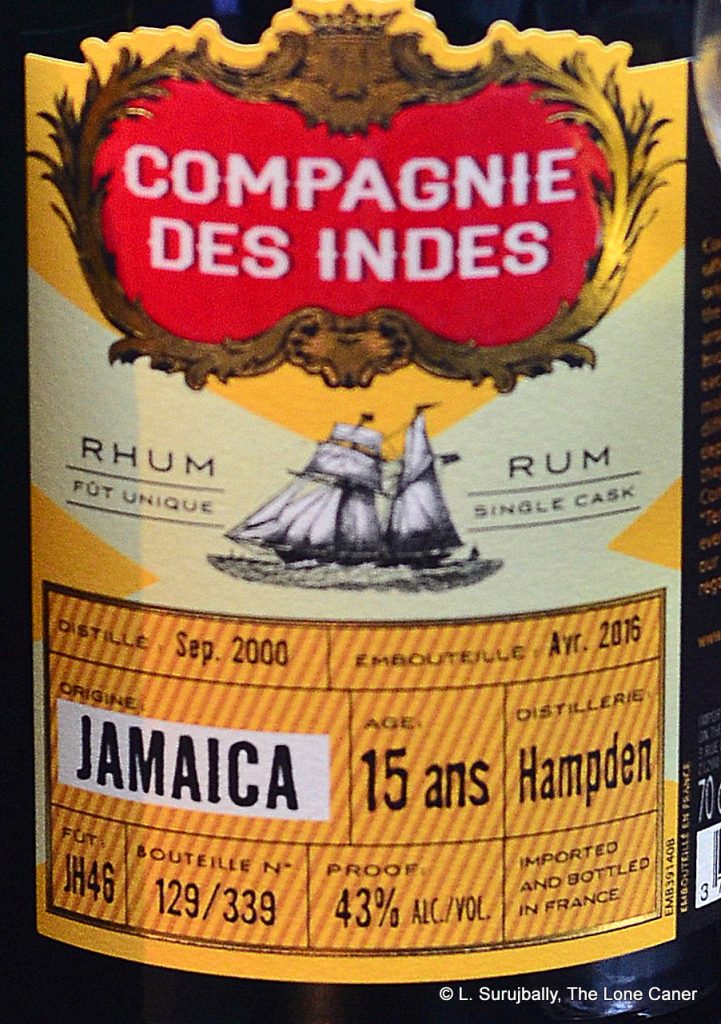 On the palate, I didn’t think it could quite beat out the CdI Worthy Park (which was half its age, though quite a bit stronger); but it definitely had more force and more uniqueness in the way it developed than the Longpond and the Mezans. It started with cherries, going-off bananas mixed with a delicious citrus backbone, not too excessive. After ten minutes or so it opened further into a medium sweet set of fruits (peaches, pears, apples), and showed notes of oak, cinnamon, some brininess, green grapes, all backed up by delicate florals that were very aromatic and provided a good background for the finish. That in turn glided along to a relatively serene, slightly heated medium-long stop with just a few bounces on the road to its eventual disappearance, though with little more than what the palate had already demonstrated. Fruitiness and some citrus and cinnamon was about it.
On the palate, I didn’t think it could quite beat out the CdI Worthy Park (which was half its age, though quite a bit stronger); but it definitely had more force and more uniqueness in the way it developed than the Longpond and the Mezans. It started with cherries, going-off bananas mixed with a delicious citrus backbone, not too excessive. After ten minutes or so it opened further into a medium sweet set of fruits (peaches, pears, apples), and showed notes of oak, cinnamon, some brininess, green grapes, all backed up by delicate florals that were very aromatic and provided a good background for the finish. That in turn glided along to a relatively serene, slightly heated medium-long stop with just a few bounces on the road to its eventual disappearance, though with little more than what the palate had already demonstrated. Fruitiness and some citrus and cinnamon was about it.


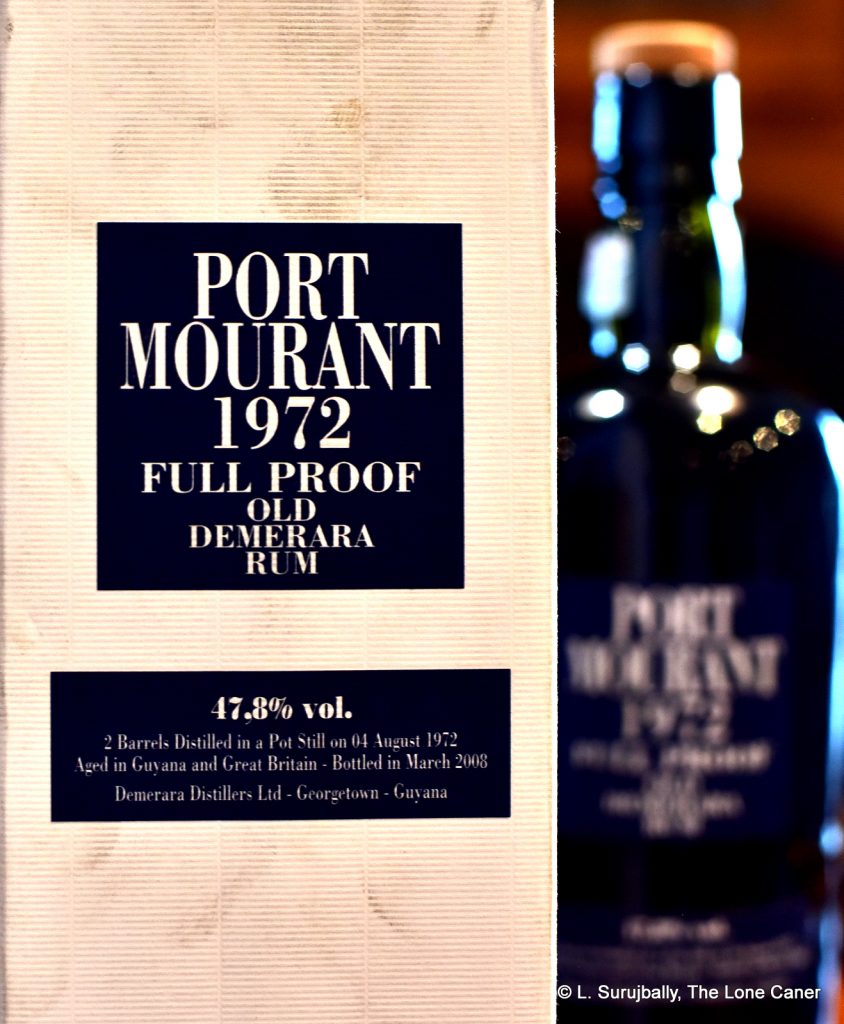 The nose made an immediate and emphatic response: “Here’s how.” I had exasperatedly grumbled
The nose made an immediate and emphatic response: “Here’s how.” I had exasperatedly grumbled 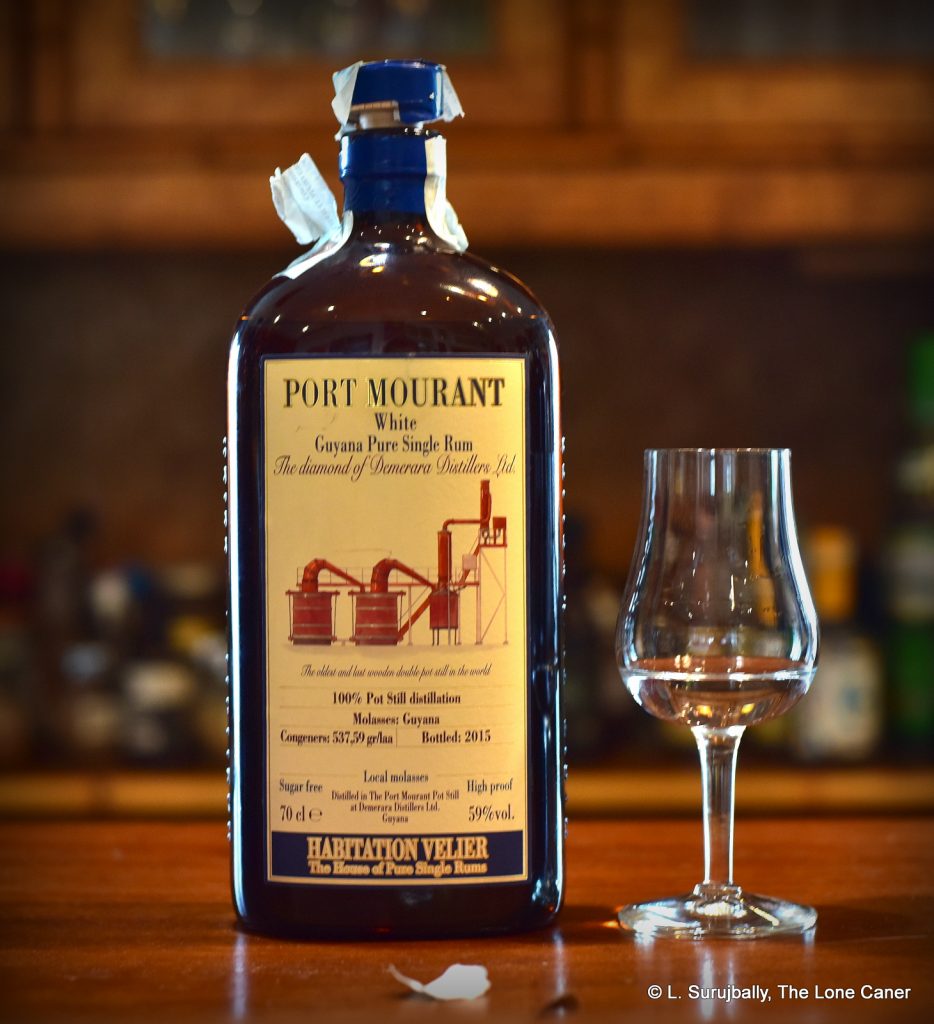
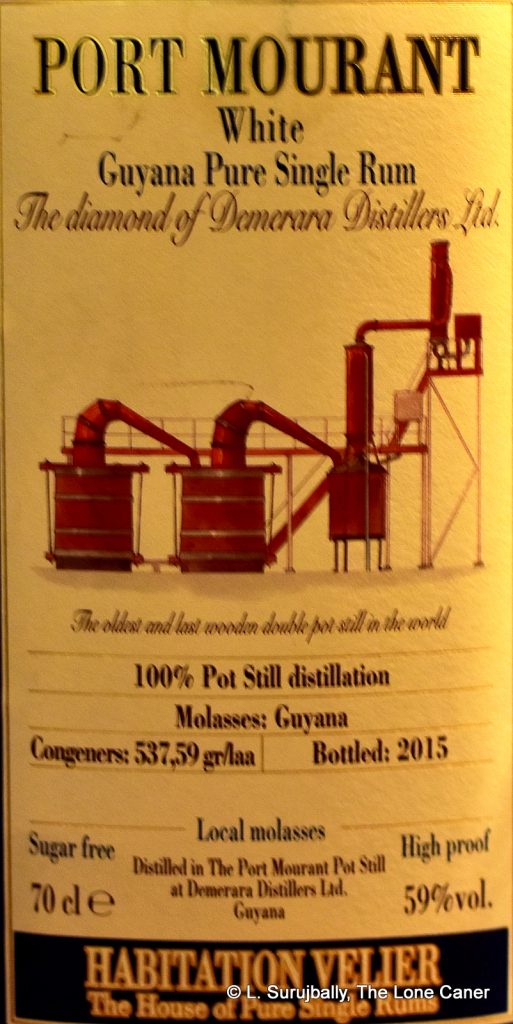 Unaged rums take some getting used to because they are raw from the barrel and therefore the rounding out and mellowing of the profile which ageing imparts, is not a factor. That means all the jagged edges, dirt, warts and everything, remain. Here that was evident after a single sip: it was sharp and fierce, with the licorice notes subsumed into dirtier flavours of salt beef, brine, olives and garlic pork (seriously!). It took some time for other aspects to come forward – gherkins, leather, flowers and varnish – and even then it was not until another half hour had elapsed that crisper acidic notes like unripe apples and thai lime leaves (I get those to buy in the local market), were noticeable. Plus some vanilla – where on earth did that come from? It all led to a long, duty, dry finish that provided yet more: sweet, sugary, sweet-and-salt soy sauce in a clear soup. Damn but this was a heady, complex piece of work. I liked it a lot, really.
Unaged rums take some getting used to because they are raw from the barrel and therefore the rounding out and mellowing of the profile which ageing imparts, is not a factor. That means all the jagged edges, dirt, warts and everything, remain. Here that was evident after a single sip: it was sharp and fierce, with the licorice notes subsumed into dirtier flavours of salt beef, brine, olives and garlic pork (seriously!). It took some time for other aspects to come forward – gherkins, leather, flowers and varnish – and even then it was not until another half hour had elapsed that crisper acidic notes like unripe apples and thai lime leaves (I get those to buy in the local market), were noticeable. Plus some vanilla – where on earth did that come from? It all led to a long, duty, dry finish that provided yet more: sweet, sugary, sweet-and-salt soy sauce in a clear soup. Damn but this was a heady, complex piece of work. I liked it a lot, really.
